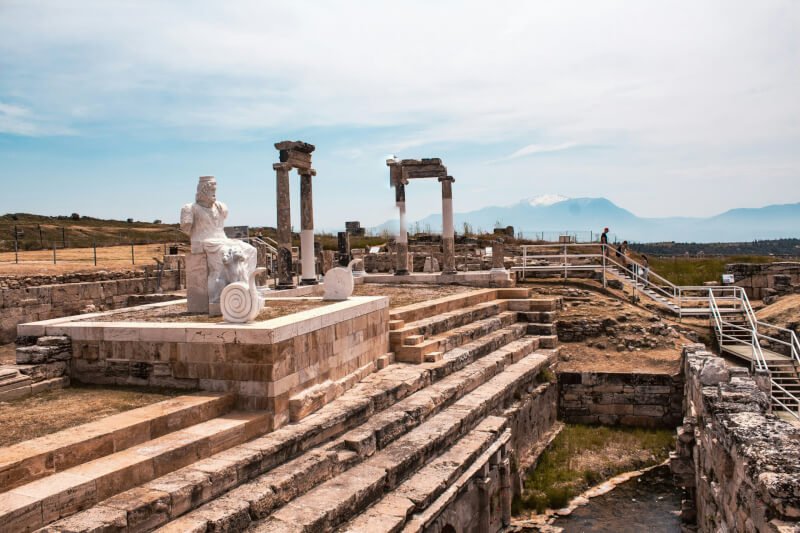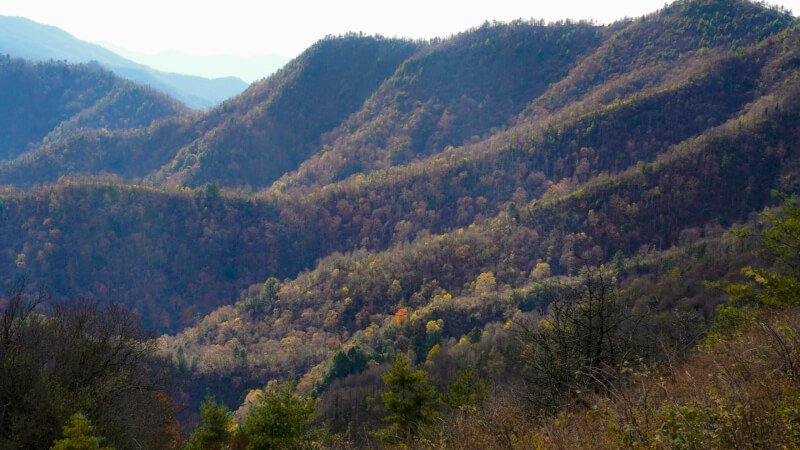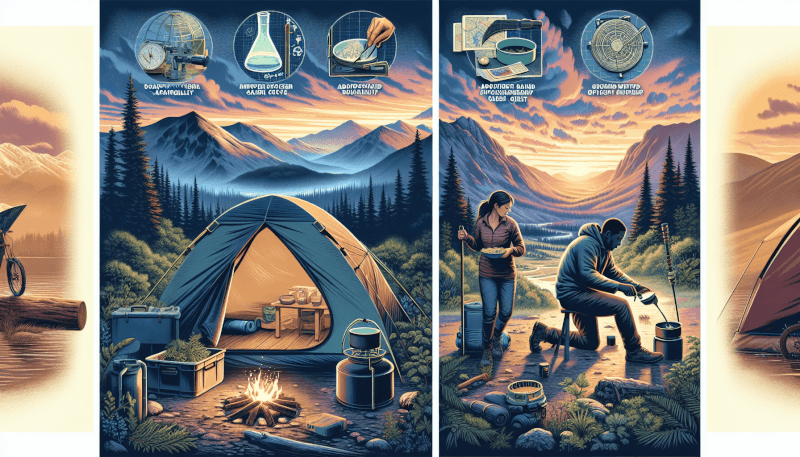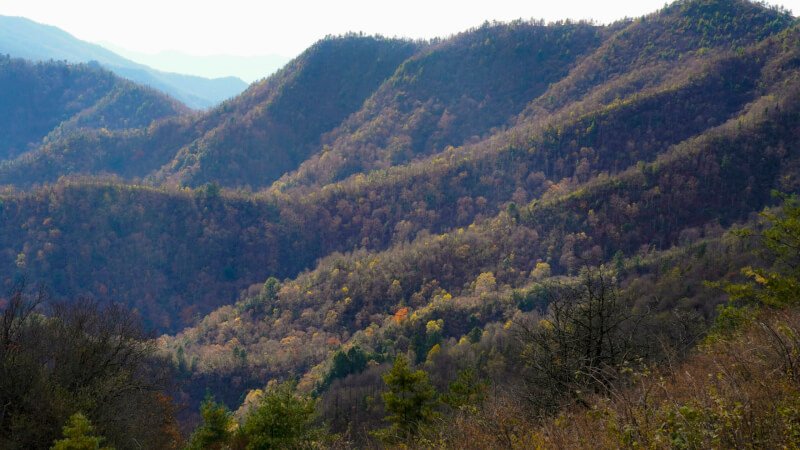Imagine a world where every twist and turn uncovers a new adventure, where the only plans you make are to adapt to the unexpected. Get ready to immerse yourself in the world of camping adventure stories, where nature’s surprises become your greatest companions. In this article, we will explore the awe-inspiring tales of those who have braved the wilderness, and learn how adapting to the unknown can unveil the most unforgettable experiences nature has to offer.

Preparing for the Trip
Choosing a suitable campsite
When preparing for a camping trip, one of the first things you’ll need to consider is choosing a suitable campsite. Look for a location that suits your needs and preferences. Are you looking for a rustic, secluded spot in the wilderness or a campground with amenities such as showers and electricity? Consider the proximity to water sources, hiking trails, and any specific activities you’re interested in. Pay attention to any regulations or permits required to camp in the area, as well as any fees associated with the campsite.
Researching the local wildlife
To make the most of your camping experience, it’s important to research the local wildlife beforehand. Knowing what animals are present in the area can help you avoid potential encounters or know how to respond if you do come across wildlife. Learn about the habits and behaviors of animals such as bears, coyotes, or snakes that may be found in the area. Familiarize yourself with proper food storage techniques and understand how to safely interact with wildlife. Remember to always keep a respectful distance and never feed or approach wild animals.
Checking the weather forecast
Checking the weather forecast is crucial when planning your camping trip. It can help you prepare for any weather conditions you may encounter during your adventure. While unexpected weather changes can happen, having an idea of what to expect can help you pack appropriate clothing, gear, and supplies. If rain is in the forecast, make sure you have waterproof clothing and a rain fly for your tent. If high temperatures are expected, pack lightweight and breathable clothing. Being prepared for the weather will ensure a more comfortable and enjoyable camping experience.
Navigating the Wilderness
Using a compass and map
When venturing into the wilderness, it’s essential to have the skills to navigate your way. Familiarize yourself with using a compass and map before your trip. A compass can help you determine which direction you’re heading, while a map provides an overview of the area and helps you plan your route. Learn how to interpret map symbols, contour lines, and how to measure distances accurately. Practice using your compass and map in familiar areas to build confidence in your navigation skills.
Marking and following trail signs
Trail signs are invaluable when it comes to keeping you on the right path during your camping trip. Look out for trail signs and markers along the way and make sure to familiarize yourself with their meanings before setting off. These signs can indicate important information such as direction, distance, and potential hazards. Pay close attention to any trail junctions and make note of the signs or markers to help you find your way back. By following trail signs, you’ll be better equipped to navigate the wilderness and avoid getting lost.
Reading the topography
Understanding the topography of the area you’ll be exploring is essential for safe and successful navigation. Take the time to study the landforms, elevation changes, and natural features of your camping destination. Topographic maps can provide valuable information about the terrain and help you plan your route. Learn how to identify ridges, valleys, and water features on the map and translate them into the actual landscape. By reading the topography, you’ll be able to anticipate challenges, find water sources, and navigate more effectively during your camping adventure.

Encountering Wildlife
Identifying different animal tracks
Encountering wildlife is one of the most exciting aspects of camping, but it’s important to be able to identify different animal tracks for safety purposes. Educate yourself on the tracks and signs left behind by various animals that inhabit the area. Look for characteristics such as size, shape, and claw marks. Being able to identify tracks can help you determine the presence of dangerous animals or ones that may pose a threat to your campsite. Remember to keep a respectful distance and never approach wild animals, even if you’re able to identify their tracks.
Practicing animal safety
When camping in wildlife-rich areas, it’s crucial to practice animal safety to protect both yourself and the animals. Respect their natural habitats by observing them from a distance and avoid leaving food or garbage out that may attract wildlife. Store your food securely in bear-resistant containers or hoist it up in a tree away from your sleeping area. Be mindful of your surroundings and make noise to alert any animals of your presence when hiking. By practicing animal safety, you can minimize the risk of negative encounters and enjoy the wildlife in a responsible and ethical way.
Dealing with encounters
Despite our best efforts to avoid wildlife encounters, they can still occur. It’s important to know how to deal with encounters to ensure your safety and the well-being of the animals. If you come across a bear, stand your ground, speak calmly, and slowly back away without turning your back. In the case of encountering a snake, give it a wide berth and avoid sudden movements. If a dangerous animal does approach, use any available deterrents such as bear spray, noise-making devices, or rocks. Understanding how to respond in such situations can help you navigate encounters with confidence and minimize potential harm.
Surviving the Elements
Setting up a sturdy tent
Setting up a sturdy tent is essential for a comfortable camping experience, especially when facing unpredictable weather conditions. Before your trip, practice setting up your tent at home to become familiar with the process and ensure you have all the necessary poles, stakes, and guy lines. Choose a flat, well-drained spot for your tent and clear any debris or rocks that could cause discomfort. Consider the weather conditions and be prepared to stake down your tent securely or weight it down if necessary. A properly pitched, sturdy tent will provide shelter and protection from the elements throughout your camping adventure.
Building a proper campfire
A campfire not only provides warmth and a cozy ambiance but also serves as a vital cooking tool and a means of signaling for help in case of emergencies. When building a campfire, it’s important to prioritize safety and practice Leave No Trace principles. Choose a designated fire ring or a suitable location away from any flammable materials. Clear the area around the fire pit of dry leaves and debris. Build a small fire using dry twigs and gradually add larger pieces of wood. Never leave a fire unattended and ensure it’s fully extinguished before leaving the campsite or going to bed.
Finding and purifying water sources
Access to clean water is crucial for survival when camping in the wilderness. Finding and purifying water sources ensures hydration and minimizes the risk of waterborne illnesses. Research the area to identify potential water sources such as streams, lakes, or springs before starting your trip. Invest in a reliable water filter or water treatment tablets to purify the water you gather. Avoid collecting water from stagnant sources, and always follow the recommended guidelines for water filtration and purification. By being knowledgeable about finding and purifying water, you can stay hydrated and healthy throughout your camping adventure.

Coping with Weather Changes
Preparing for sudden temperature drops
When spending time outdoors, it’s important to be prepared for sudden temperature drops. Pack appropriate clothing layers to regulate your body temperature. Start with a moisture-wicking base layer to keep sweat away from your body, add an insulating mid-layer for warmth, and finish with a waterproof and windproof outer layer for protection. Additionally, bring a warm hat, gloves, and extra socks to keep extremities cozy. Having the right clothing will help you adapt to temperature changes and stay comfortable during your camping trip.
Staying dry during unexpected rain
Rain showers during a camping trip may be unexpected but are not uncommon. To stay dry, be prepared with appropriate rain gear. Invest in a good quality waterproof jacket and pants that are breathable to prevent moisture buildup. Consider packing extra tarps or a rain fly for added protection over your tent and cooking areas. Make sure you have dry bags or waterproof containers for storing important items such as bedding and electronics. With the right rain gear and precautions, you can continue enjoying the outdoors even on rainy days.
Protecting against extreme heat
When camping in hot and sunny conditions, protecting yourself from extreme heat is essential. Stay hydrated by drinking plenty of water and consider using electrolyte supplements to replenish lost minerals. Wear loose-fitting, lightweight, and breathable clothing that provides sun protection. Use a broad-spectrum sunscreen with a high SPF and reapply it frequently, especially after swimming or sweating. Seek shade during the hottest part of the day and plan activities accordingly. By protecting yourself against extreme heat, you can prevent heat-related illnesses and safely enjoy your camping trip.
Overcoming Hiking Challenges
Preparing for difficult terrains
Hiking in varying terrains can present unique challenges during a camping trip. It’s crucial to be prepared physically, mentally, and with the right equipment. Strengthen your lower body muscles through exercises such as lunges and squats to prepare for steep ascents and descents. Invest in proper hiking boots that provide ankle support and traction for different surfaces. Plan your route in advance, studying the elevation changes and potential obstacles. Bring trekking poles for added stability and consider using a backpack with a hip belt for better weight distribution. By preparing for difficult terrains, you’ll be ready to tackle any challenges that come your way.
Dealing with navigation obstacles
Navigating through dense forests or areas with limited visibility can present navigation obstacles. Stay alert and remain attentive to your surroundings. Use your compass and map skills to navigate around obstacles and find alternative routes. Pay attention to landmarks or unique features that can serve as reference points, helping you stay on track. If necessary, backtrack to a known point and reassess your route. Developing good navigation skills and maintaining a calm and focused mindset will ensure you overcome any obstacles encountered during your camping journey.
Handling physical fatigue
Hiking and camping can be physically demanding, especially when carrying heavy backpacks or traversing challenging terrains. When faced with physical fatigue, listen to your body and take breaks when needed. Pace yourself and don’t push beyond your limits, risking injury or exhaustion. Stay hydrated and energized by snacking on high-protein and high-carbohydrate foods during your hike. Stretch your muscles periodically to prevent stiffness. And most importantly, get sufficient rest during the night to allow your body to recover. By handling physical fatigue wisely, you’ll be able to conquer hiking challenges and fully enjoy your camping adventure.

Food and Cooking Techniques
Packing and storing food properly
Packing and storing food properly is vital for maintaining its freshness and preventing unwanted encounters with wildlife. Invest in odor-proof and bear-resistant food containers or bags to store your food securely. Separate your food into individual meal portions to minimize the odor. Keep perishable items in a cooler with ice or ice packs to maintain their freshness. Store all food items away from your sleeping area, suspended from a tree branch, or in a bear-proof container. By packing and storing your food properly, you’ll prevent attracting wildlife to your camp and ensure a safe camping experience.
Knowing different cooking methods
Knowing different cooking methods will elevate your camping meals and provide a variety of delicious options. Whether you’re using a camp stove, a portable grill, or cooking over an open fire, it’s important to be familiar with the equipment and understand how to operate them safely. Expand your cooking repertoire by exploring simple recipes that can be easily prepared in a camping setting. Experiment with foil-wrapped meals, one-pot dishes, or grilling techniques to add flavor to your outdoor dining experience. By knowing different cooking methods, you’ll be able to enjoy a wide range of tasty and satisfying meals during your camping trip.
Handling and disposing food waste
Properly handling and disposing of food waste is essential for maintaining campsite cleanliness and minimizing environmental impact. Always pack out what you pack in and leave no trace behind. Dispose of food scraps in double-sealed bags to prevent attracting wildlife. Use designated receptacles or bear-proof containers for storing food waste until you can properly dispose of it. Avoid throwing food waste into bodies of water or burying it in the ground, as this can disrupt the natural ecosystem. By responsibly handling and disposing of food waste, you’ll help preserve the wilderness and leave a positive impact on the environment.
Handling Emergencies
Creating a first-aid kit
Being prepared for emergencies is crucial when venturing into the wilderness. Create a comprehensive first-aid kit that includes essential items such as bandages, antiseptic wipes, adhesive tape, pain relievers, and any personal medications. Additionally, pack items such as tweezers, scissors, and gauze pads for more serious injuries. Familiarize yourself with basic first-aid techniques, such as treating cuts, burns, and insect bites. Make sure to regularly check and restock your first-aid kit, ensuring that all items are in good condition and within their expiration dates. Having a well-stocked and up-to-date first-aid kit can provide you with peace of mind and the ability to handle emergencies effectively.
Knowing basic medical skills
Knowing basic medical skills can make a significant difference during an emergency situation. Take a first-aid and CPR course to gain the necessary knowledge and skills to respond to injuries or illnesses that may occur in the wilderness. Learn how to assess vital signs, administer CPR, and stop bleeding effectively. Understand the symptoms and treatments for common outdoor-related ailments such as heatstroke, hypothermia, or dehydration. By acquiring basic medical skills, you’ll be better equipped to handle emergencies and provide immediate assistance until professional help arrives.
Contacting emergency services
In the event of a serious emergency that requires professional assistance, knowing how to contact emergency services is crucial. Before your camping trip, research the local emergency contact numbers, including park rangers or local authorities. Familiarize yourself with the nearest medical facilities or emergency services in case of severe injuries or illnesses. Additionally, consider bringing a satellite phone or personal locator beacon if you’ll be camping in remote areas with limited cell phone coverage. By knowing how to contact emergency services, you can expedite the response time and ensure the best possible outcome in critical situations.

Camping Etiquette and Leave No Trace Principles
Respecting other campers and nature
Part of being a responsible camper is practicing good camping etiquette and showing respect for other campers and nature. Keep noise levels down, especially during quiet hours, to ensure a peaceful camping experience for fellow campers. Respect designated campsites and follow any rules or regulations posted in the area. Treat the natural environment with care, refraining from littering or damaging vegetation. Minimize your impact by staying on designated trails and using established campsites. By respecting other campers and nature, you’ll help create a harmonious and enjoyable environment for everyone.
Proper waste disposal techniques
Proper waste disposal is essential for preserving the beauty of the wilderness and protecting wildlife. Pack out all your trash and garbage, leaving no trace behind. Avoid burying garbage, as it can attract animals and disrupt the ecosystem. Make sure to separate recyclables and dispose of them in appropriate recycling bins when available. Use designated toilets or follow the “Leave No Trace” principle of digging a small hole at least 200 feet away from water sources and campsites to bury human waste. By employing proper waste disposal techniques, you’re helping to keep the environment clean and pristine for future campers.
Leaving the campsite as you found it
A fundamental principle of responsible camping is leaving the campsite as you found it, if not better. Before leaving, thoroughly clean your campsite, removing any trash or debris. Inspect the area for any belongings or equipment you may have left behind. Extinguish any remaining campfires, ensuring they are cold to the touch and completely extinguished. Restore the natural appearance of the campsite by replacing rocks or logs that may have been moved. By leaving the campsite as you found it, you’re ensuring that future campers can enjoy the beauty of nature just as much as you did.
Memorable Camping Night Stories
Sharing spooky encounters
One of the most rewarding aspects of camping is sharing spooky encounters and tales around the campfire. Whether it’s a ghostly apparition seen in the moonlight or mysterious sounds echoing through the silent woods, spooky stories add an element of excitement to your camping nights. Encourage fellow campers to share their own experiences, each storyteller trying to outdo the others with their spine-chilling narratives. Remember, these stories are meant to entertain and make memories, so let your imagination run wild and enjoy the thrill of the unknown.
Relating unexpected adventures
Camping adventures are often filled with unexpected twists and turns that make for exciting stories. Share your unexpected adventures with fellow campers, recounting the time you stumbled upon a hidden waterfall or got caught in an unexpected thunderstorm. These tales inspire others and may even encourage fellow campers to seek their own unexpected adventures. The magic of camping lies in the wonder of the unpredictable, so embrace these unforeseen experiences and create unforgettable memories.
Recounting heartwarming moments
Camping trips can often bring people closer together and create heartwarming moments that are worth recounting. Share stories that highlight the bonds formed, the acts of kindness witnessed, or the breathtaking scenes that left a lasting impression. Perhaps it was watching the sunrise with newfound friends or seeing a child’s eyes light up as they caught their first fish. These stories remind us of the beauty in human connections and the simple pleasures that nature provides. By sharing heartwarming moments, you’re spreading joy and inspiring others to seek their own moments of connection and appreciation during their camping adventures.
In conclusion, a successful camping trip requires careful preparation, knowledge of the wilderness, and a respect for nature and other campers. Choosing a suitable campsite, researching local wildlife, and checking the weather forecast are crucial steps in preparing for the trip. Navigating the wilderness involves using a compass and map, marking and following trail signs, and reading the topography. When encountering wildlife, it’s important to identify animal tracks, practice animal safety, and know how to handle encounters. Surviving the elements involves setting up a sturdy tent, building a proper campfire, and finding and purifying water sources. Coping with weather changes means preparing for temperature drops, staying dry during rain, and protecting against extreme heat. Overcoming hiking challenges includes preparing for difficult terrains, dealing with navigation obstacles, and handling physical fatigue. When it comes to food and cooking techniques, pack and store food properly, know different cooking methods, and handle and dispose of food waste responsibly. Handling emergencies involves creating a first-aid kit, knowing basic medical skills, and knowing how to contact emergency services. Camping etiquette and Leave No Trace principles emphasize respecting other campers and nature, proper waste disposal techniques, and leaving the campsite as you found it. Finally, memorable camping night stories provide a chance to share spooky encounters, relate unexpected adventures, and recount heartwarming moments. With these comprehensive tips and insights, you’ll be well-equipped for a safe and enjoyable camping adventure.


